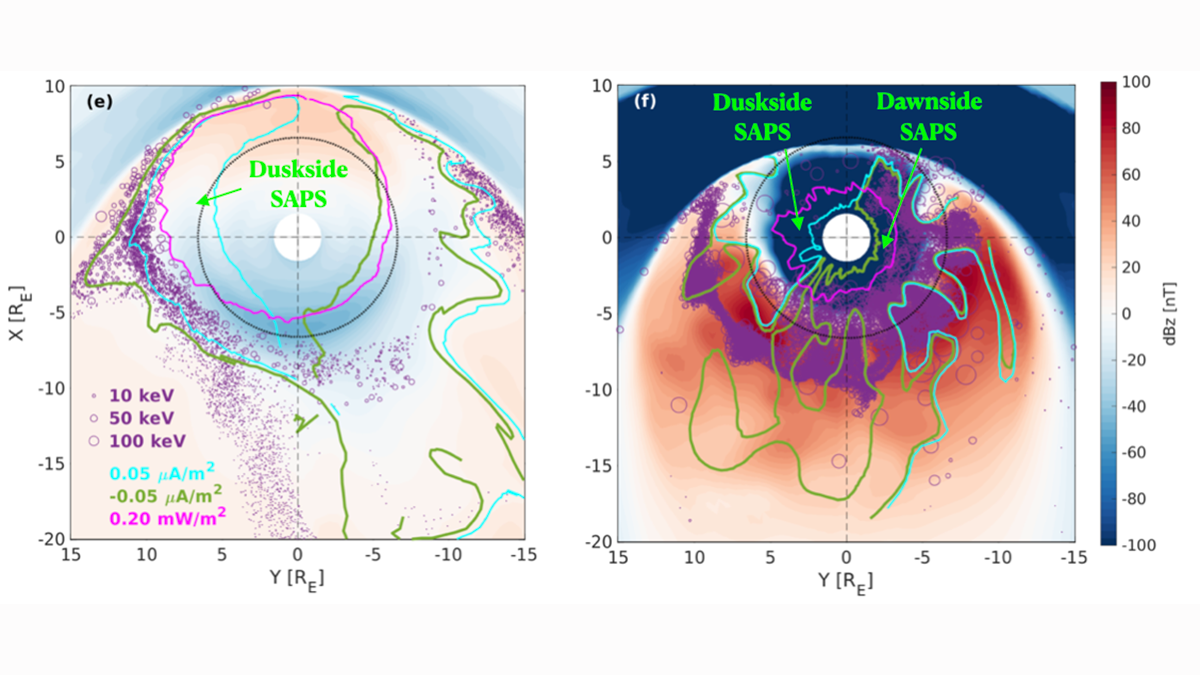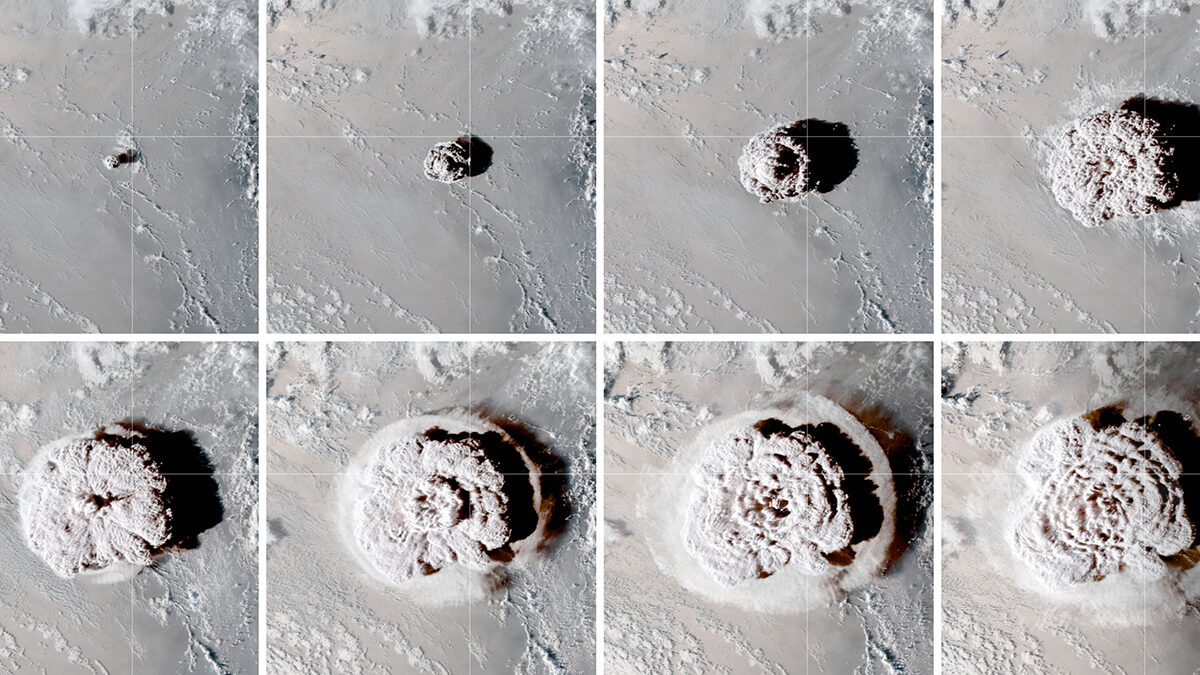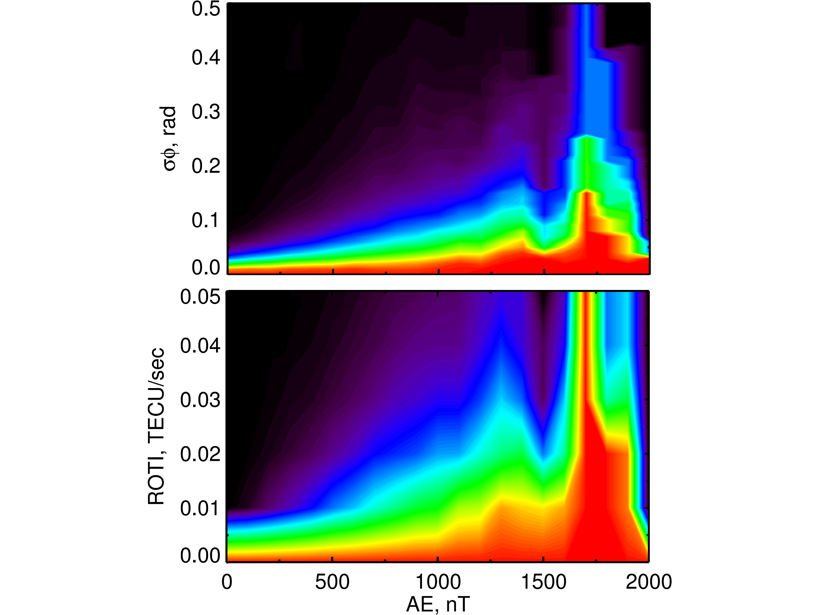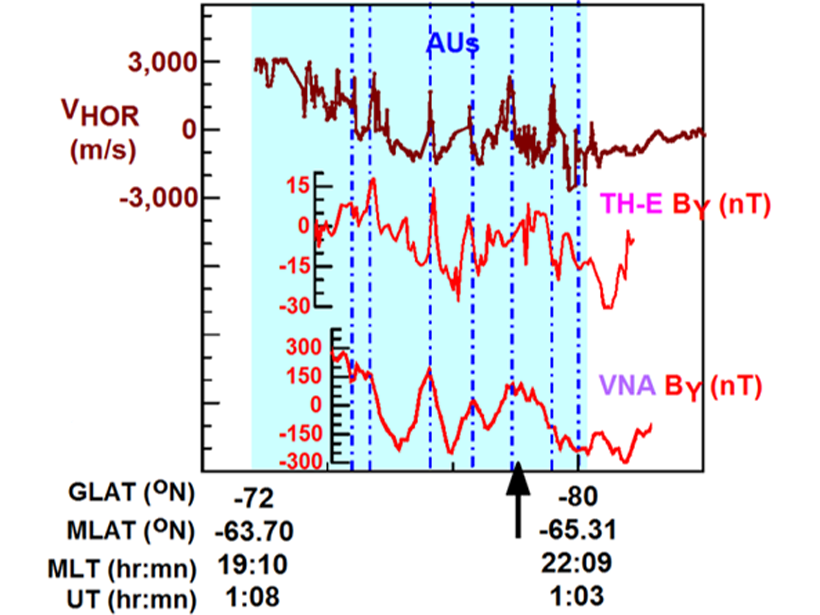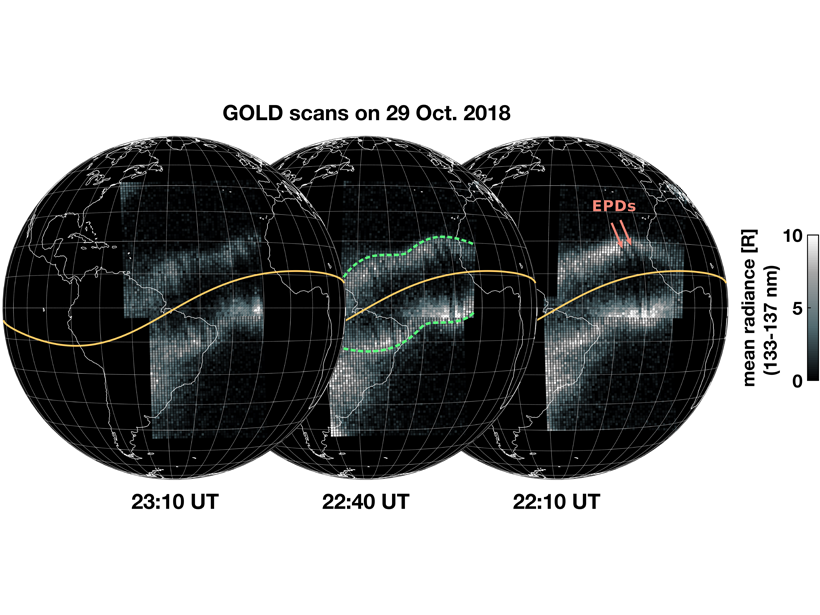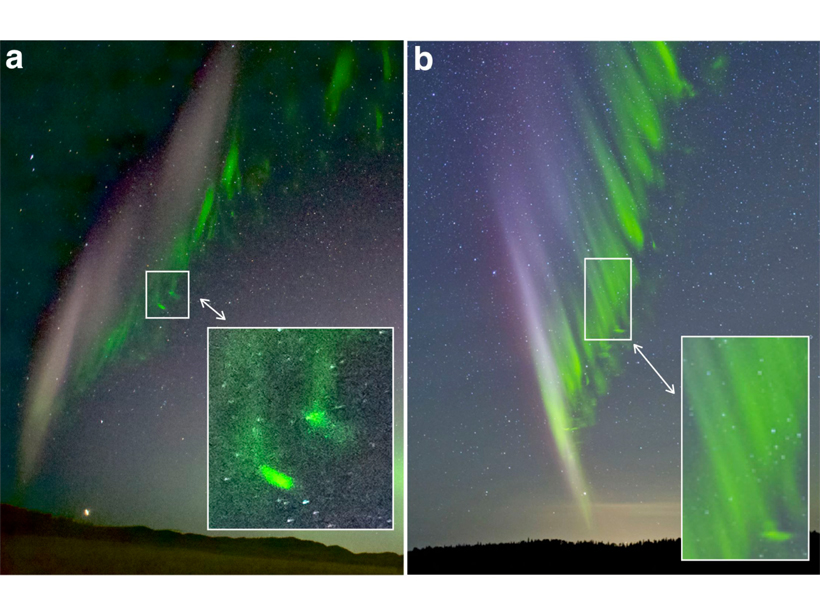Geomagnetic storms induce fast plasma flows next to the aurora and affect space weather. Lin et al. explain the origin of a special “dawnside” plasma stream that occurs only during extreme storm events.
ionospheres
Tonga Volcanic Eruption Produced Ionospheric Hole and ‘Bubbles’
The 2022 Tonga volcano eruption altered the global ionosphere, creating a huge ionospheric hole locally near the epicenter and large-amplitude plasma bubbles remotely over the Asia-Oceania area.
Amateur Radio Observations Help Monitor Space Weather
Amateur radio observations provide a new method for studying large-scale ionospheric disturbances and HF communication impacts, and are important applications in ionospheric space weather monitoring.
Meteoric Ions Influence Conductance in the Jovian Ionosphere
Meteoric ions dominate the Jovian lower ionosphere due to their long lifetimes. Due to the large densities of the meteoric ions, conductance is enhanced independently of local time.
Tonga Eruption Made Waves in Earth’s Ionosphere
The blast from Hunga Tonga–Hunga Ha’apai produced far-reaching ionospheric disturbances, including one with an initial speed up to 950 meters per second.
The Auroral E-region is a Source for Ionospheric Scintillation
Observations reveal a connection between auroral particle precipitation and scintillation, indicating that the ionospheric E-region is a key source region for phase scintillation at auroral latitudes.
Satellite Data Reveal Magnetospause K-H Waves Impact Auroras
Analysis of multiple satellite data has revealed a striking connection between K-H waves on the magnetopause, surface waves in the hot zone near the plasmapause, and auroral undulations.
GOLD Sees Quasi-Stationary Waves in the Nighttime Ionosphere
The wave-like features in the pre-midnight ionosphere are not moving, vary strongly from day-to-day, and are often associated with the equatorial plasma bubbles, but their origin is still unknown.
Citizen Scientists Observe Mysterious Green Streaks Below STEVE
Citizen scientists provided images of sub-auroral STEVE (Strong Thermal Emission Velocity Enhancements) showing fine-scale green features with narrow streaks propagating poleward toward STEVE.

